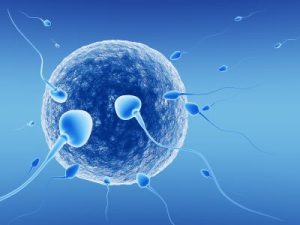In Vitro Fertilization
 The I.V.F (or a “test-tube baby” treatment ) is the most advanced treatment in reproduction. The fertilization of eggs occurs outside of the female body, in a Petri dish. Multiple eggs are removed from the woman’s ovary using a needle guided by ultrasound under anesthesia and then mixed with her partner’s sperm. Resulting embryos are kept in the incubator for several days and allowed to divide and multiply their cells. The well-developing embryos are then placed into the uterus by introducing a thin plastic catheter through the cervix.. If the woman fails to develop good quality eggs in her ovaries, the couple may decide to use eggs obtained from a healthy and fertile donor. The resulting embryos are then placed into the woman’s uterus.
The I.V.F (or a “test-tube baby” treatment ) is the most advanced treatment in reproduction. The fertilization of eggs occurs outside of the female body, in a Petri dish. Multiple eggs are removed from the woman’s ovary using a needle guided by ultrasound under anesthesia and then mixed with her partner’s sperm. Resulting embryos are kept in the incubator for several days and allowed to divide and multiply their cells. The well-developing embryos are then placed into the uterus by introducing a thin plastic catheter through the cervix.. If the woman fails to develop good quality eggs in her ovaries, the couple may decide to use eggs obtained from a healthy and fertile donor. The resulting embryos are then placed into the woman’s uterus.
The process for IVF:
- The ovaries are stimulated by hormone injections to produce multiple eggs (in a natural cycle, mostly only one egg is produced every month)
- The growth of the eggs in the ovaries is monitored by ultrasound and hormone tests.
- When the follicles reach large enough sizes, a hormone (hCG) injection is given that causes the eggs to mature
- 34-38 hours after the hormone (hCG) injection, the eggs are removed (or aspirated) from the ovaries by a needle introduced via the vaginal route under ultrasound guidance
- The eggs are mixed with the partner’s semen and placed in an incubator to fertilize
- The fertilized eggs known as embryos are placed into the uterus 2-5 days after fertilization
- A pregnancy test can be done two weeks later to find out if the IVF procedure has been successful
